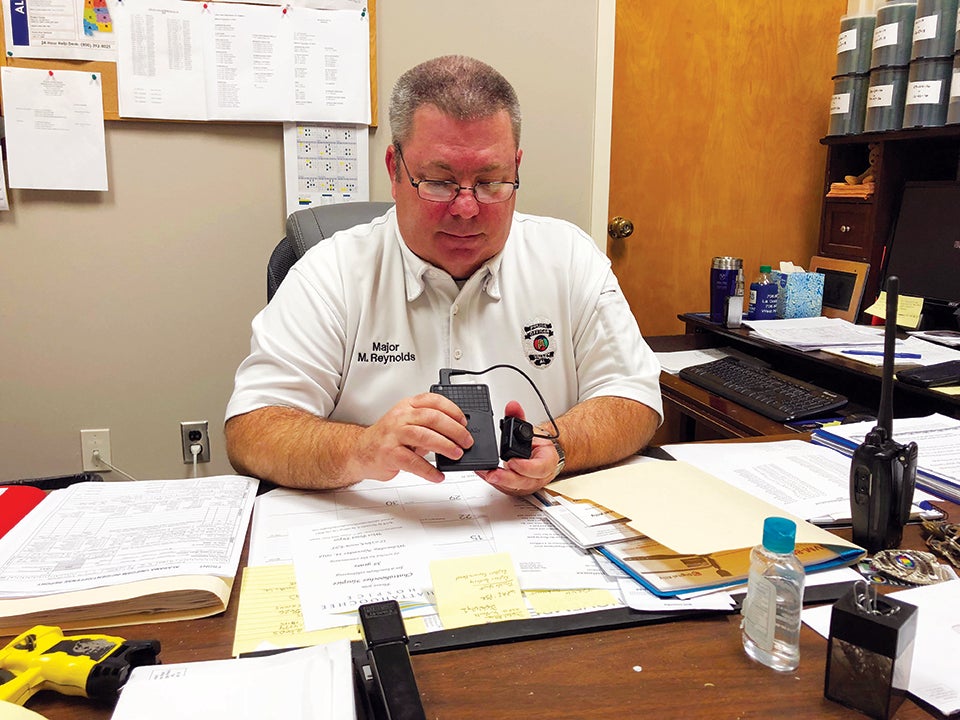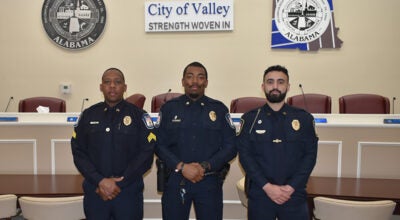Valley police utilizing new cameras
Published 6:14 pm Wednesday, November 14, 2018
VALLEY – In today’s climate of policing, it is vital that everything is recorded, audibly and visually, according to Valley Police Department Major Mike Reynolds.
Recently, the Valley City Council gave the police department the green light to solicit bids on new body cameras for the officers and dash cameras for their vehicles. Reynolds said the old body cameras were breaking down and becoming unreliable and the dash cams had problems, including losing audio.
All in all, the department purchased 16 new body cameras – one for each officer – and eight dash cameras for vehicles. The price tag on the new equipment hit the public safety budget for about $40,000, Reynolds said.
It may seem like a hefty price for the equipment, but Reynolds thinks this is the way all police departments are going.
“The trend is every police department is going toward body cams, and I would suffice to say that at one point it will be mandatory sometime in the near future,” he said.
The reason for the push for cameras is because the camera just records and doesn’t lie.
“Everybody lies,” Reynolds said. “When we arrest somebody, they lie. Unfortunately, in the past, there have been officers who have lied and sent people to jail.
“The cameras keep everybody honest.”
He said officers turn on their body cameras whenever there is an interaction with the public. There are instances when a resident can request not to be filmed and can be redacted from the footage later, but if the officer is investigating an incident or the person has committed a crime, the camera stays on.
Reynolds said it’s crucial that everything is captured because several reports come in about how the police officers treat the individuals that are arrested. With this software, he said he can see and hear what really happened.
“About 80 to 90 complaints that we get are disproved due to the cameras,” he said.
On the other side of the coin, Reynolds said the cameras can be used as a training tool for the officers. He said in high-pressure situations, officers aren’t always aware of how they are responding.
“When you get into a situation, especially when there is high adrenaline, a lot of times you are focused on one thing,” he said. “The camera doesn’t do that, it captures everything.”
He said the department can go back and view that footage and use it as a teaching situation about how to better approach it.
Dash camera technology has also upgraded tremendously in Reynolds’ 30 years on the police force. He said dash cameras used to be recorded with a VHS recorder in the trunk and the officer had to label the tape and keep it in a storage room.
Now, officers have two cameras in the car — one for in front of them and one for the back seat when someone is in custody. There is also a microphone that picks up everything that is said while a person is in the car.
The footage from the shift is automatically downloaded once the car returns to the police department due to an access point at the police building. All the officers have to do is label the incident.
The dash cams can come on one of three ways, Reynolds said. The office can manually turn it on, when the emergency lights come on or when the officer’s car reaches 80 miles per hour. The camera, which is always running, starts recording 30 seconds before the incident that triggers it to record.






